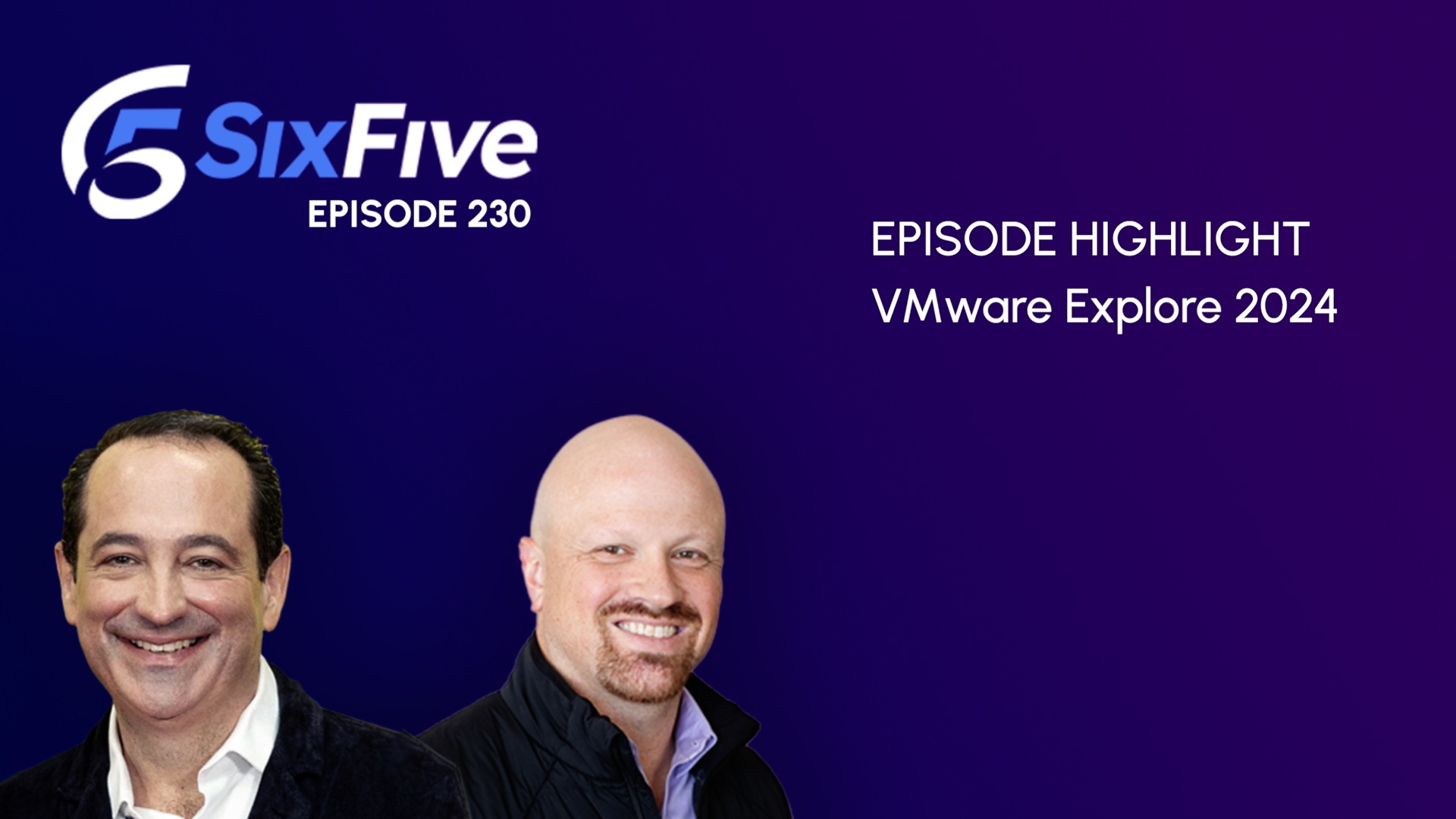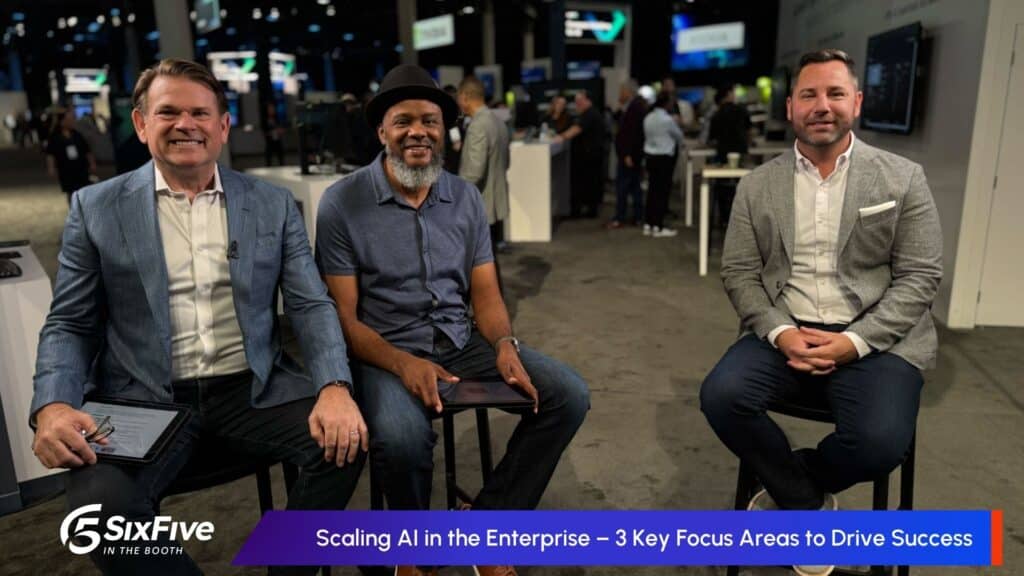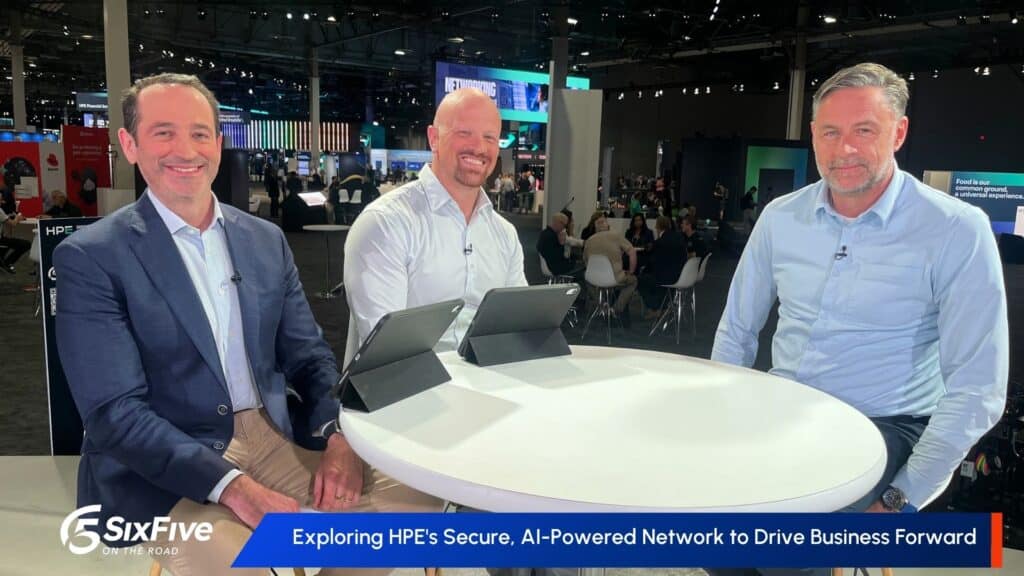The Six Five team discusses VMware Explore 2024
If you are interested in watching the full episode you can check it out here.
Disclaimer: The Six Five Webcast is for information and entertainment purposes only. Over the course of this webcast, we may talk about companies that are publicly traded and we may even reference that fact and their equity share price, but please do not take anything that we say as a recommendation about what you should do with your investment dollars. We are not investment advisors and we ask that you do not treat us as such.
Transcript:
Patrick Moorhead: VMware Explore 2024. Dan and I were both in Las Vegas at that show. We got a rare opportunity to talk with Broadcom’s CEO, Hock Tan, right after he got off-stage doing his keynote. And it was pretty awesome. It was one of these post-game interviews just to break stuff down. Key highlights, this was all about the private cloud. VCF, so today, 15 years ago, the public cloud was born. It was created by AWS, and it was essentially running infrastructure and services that were not on-prem and not in a colo that you’re renting and managing.
And developers wanted to go there because of the flexibility that they would get. It used to take four months to spin up the compute resource, six to spin up storage. And my gosh, sometimes nine months to spin up networking. And going to the public cloud, you could spin it up immediately. You could swipe a freaking credit card to get in there and you had almost unlimited resources. Fifteen years later, you have companies like VMware, Nutanix and Red Hat building stacks that run on-prem that mimic the public cloud at a substantially lower cost. As long as you’re keeping those resources busy. Hey, if you don’t want to manage your infrastructure, you can do that at a colo and do something in between. So, VMware Cloud Foundation, otherwise known as VCF or the short name of it, they went to 9.0.
And that was going from 5.2 to 9.0, but we won’t go down that path. It doesn’t even matter. That was aligned with ESX. But anyways, here’s the upshot. We have been waiting, VCF has been around for a while, but my take is this is the first time it’s actually ready with a full stack and what the company is calling advanced services to go along with it. And one of the advanced services is private AI. You have security services. You have essentially good hygiene services. You have all the… I’m not saying it has as many services as AWS, but it’s getting pretty darn close. The only thing I’m trying to figure out, Dan, is how do you get the scalability of the infrastructure? Now, out of the other side of my mouth, if you want to have guaranteed instances with AWS, you’re not going to buy those on the spot market at the lowest, lowest price. You need to make a one-year, two-year commitment. And if you want to share services across regions, that’s going to cost you a lot as much. And there’s a reason why AWS has 20, 30 points of Op-Inc in there.
And the other rule of thumb, public cloud, the profit they make, AWS, again, nothing wrong with profits. Every dollar invested into CPU instances, you can charge 3X. Every dollar you put into GPU instances, you can charge 8X. And one of the most interesting thing with this private AI offering was that VMware upped its game on virtualizing the GPU. GPU’s virtualization started close to 25 years ago, and I had first started it even at AMD, allowed you to virtualize the CPU, and then they virtualized the storage, and then they virtualized the networking with NSX, and now virtualizing the GPU so it’s not just sitting idle. And I think what I heard out there was GPUs are idle 30% of the time because they’re hard to schedule them, especially when you’re bopping between even doing inference. So, super impressed with the progress the company has made there. Dan, I definitely left some oxygen, a lot of oxygen for you.
Daniel Newman: Look, Hock Tan, and we had the opportunity to sit down with Hock on a couple of occasions. We did a deeper dive conversation and we did a postmortem immediately after his keynote. What I loved most about it was he is very clear in his vision on what he wants to do. You hit a lot of the product and capabilities, Pat. But look, he’s using terms now like AWS on-prem. And we’ve heard that and you mentioned it a little bit, but this is a sea change right now of he’s not just saying, I feel like the hybrid cloud and on-prem companies have been apologetic. You’re still going to need on-prem as you make your journey to being an all cloud company, we want to help you.
He’s saying I want to challenge the C-suite, the boards of directors on really making a substantial pivot away from public cloud, and that is different than the attached to public cloud strategy we’ve heard. We have heard GreenLake has been focused on this control plane. Some of the things you can do with Red Hat enables some significant hybrid and multi-cloud capabilities. But he’s of saying VCF becomes your control plane. It becomes your first stop. It becomes the main place to build your enterprise IT stack. And his business model is also being carried out in real life too, Pat, right in front of our eyes. He’s doing what he does. He’s saying we’re going to take, what, 8,000 SKUs down to just a handful. We’re going to make this easier to buy.
But also, you’re going to have to make a bigger commitment. So, there isn’t really price increases, but you have to buy all the stuff. So, there is a price increase if you were only buying vSphere, for instance, and seeing that play out. It was interesting, Pat, in the room, the initial part of the keynote felt like everybody was a little quiet. You heard things like, “Hey, everyone,” and it was like pin drop. But as Hock presented through that opening keynote, you actually seemed like he helped people. He put them into a more comfortable situation, they dropped their guards a little bit, and they opened up and you could feel the energy pick up. By the end of the presentation, people were starting to see.
Here’s the bottom line, Pat, if the thesis is true, and I think you and I should test this in our economics lab is if the thesis is true, then there is a case to be made that workloads remaining on-prem or new workloads being deployed on-prem. And by the way, there’s not a winner takes all here. I just want to be clear. There’s not a winner takes all. There will be public cloud. He thinks it’s just for bursting. It’s almost the inverse of what the cloud talks about with prem. But Pat, in the end, I would be very surprised as numbers start to come out that you don’t see that he’s executing. I just think people underestimated this coming in. They overestimated the power of the ecosystem and Hock doesn’t make these decisions lightly. So, I was encouraged, but I think the numbers over time will tell the whole story.
Patrick Moorhead: What I’m really interested in seeing, Dan, and we need to be very careful, you could just check the growth rates of hyperscaler enterprise cloud providers and compare that to the growth of the on-prem folks. And I think you mentioned this with GreenLake, there are some really good green shoots out there, but we need to see 50%, 60%, 70% growth in on-prem Cloud for those numbers to compare to Azure, and AWS and Google Cloud. AWS is $100 billion company at this point. I’m all over the Barclays thing. 83% of CIOs are going to move a workload back on-prem. They’re not talking about 50% of their workloads. I do expect though, and this is probably the most important piece, these will be strategic workloads that are steady state. But again, the thing that’s stuck in my craw is how do you get instant growth in that?
And that’s why I think the workloads that will be on there will be ones that are steady state, and then the ones that are bursty, those applications you will put in the public cloud. And the biggest fight is going to be now is we’re you going to do the inference, baby? Where are you going to do the inference on that 80% of the enterprise data that’s on-prem?
Author Information
Daniel is the CEO of The Futurum Group. Living his life at the intersection of people and technology, Daniel works with the world’s largest technology brands exploring Digital Transformation and how it is influencing the enterprise.
From the leading edge of AI to global technology policy, Daniel makes the connections between business, people and tech that are required for companies to benefit most from their technology investments. Daniel is a top 5 globally ranked industry analyst and his ideas are regularly cited or shared in television appearances by CNBC, Bloomberg, Wall Street Journal and hundreds of other sites around the world.
A 7x Best-Selling Author including his most recent book “Human/Machine.” Daniel is also a Forbes and MarketWatch (Dow Jones) contributor.
An MBA and Former Graduate Adjunct Faculty, Daniel is an Austin Texas transplant after 40 years in Chicago. His speaking takes him around the world each year as he shares his vision of the role technology will play in our future.





